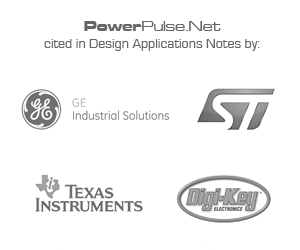For SiC, “Someday” Is Today

At the component level, the biggest barriers are affordability, availability, and reliability. The expectation is that the principle of economies of scale will allow prices to fall substantially; as customer demand surges and broadens across multiple vertical markets, the raw material costs, which represent most of the cost of the end devices, will start to drop. Consequently, the price of components will also go down. Availability is changing constantly, with new entrants to the SiC supply base showing up at nearly every tradeshow.
What do you see as the biggest barriers for circuit designers that want to use SiC in their power converter products?
At the component level, the biggest barriers are affordability, availability, and reliability. The expectation is that the principle of economies of scale will allow prices to fall substantially; as customer demand surges and broadens across multiple vertical markets, the raw material costs, which represent most of the cost of the end devices, will start to drop. Consequently, the price of components will also go down. Availability is changing constantly, with new entrants to the SiC supply base showing up at nearly every tradeshow. Obviously, some of those suppliers won’t stick with it, but the stronger brands, such as Littelfuse, will be around for the long haul. Silicon carbide is not the only semiconductor technology that has had to go through a rigorous qualification process to demonstrate its reliability to potential customers. Fortunately, today there are multiple SiC MOSFET and MPS diode vendors offering products with reliability that’s suitable for the majority of industrial applications.
Where do you see SiC technology five years from now?
I see SiC technology surging in the multi-chip or "module" format. However, SiC-based modules will likely look very different from today’s silicon-based IGBT modules in several ways. They’ll have dramatically reduced interconnect length and the layout symmetry will be better organized to ensure identical control paths to the individual chips. I also think we’ll see some innovative cooling methods that remove multiple thermal interfaces. We might also see techniques for cooling both the top and bottom side of the device, what we refer to as "double-sided cooling." Integration of the gate driver electronics is also likely. From an application perspective, we’ll see SiC in everything from commodity power factor correction (PFC) to renewable energy power converters, charging infrastructure for electric vehicles, onboard automotive power management, and more. And, much like the silicon IGBT has done, the SiC MOSFET looks poised to save a vast amount of energy around the world and reduce emissions in a meaningful way.
Let’s talk about some of the pain points circuit designers encounter when they’re integrating SiC into their applications.
Designers need to understand is that an SiC MOSFET isn’t a direct drop-in replacement for a silicon IGBT, even though some of the early advocates of SiC back in the 1990s pitched it that way. Silicon IGBTs switch much slower than SiC MOSFETs do, so designers didn’t have to worry as much about the parasitic inductance and capacitance in the surrounding circuit. But with the high-speed switching that SiC allows, suddenly the existence of parasitic inductance becomes clear in the switching transients—for example, the current falls off so sharply that very large voltage spikes are produced that sometimes can exceed the rating of the power device itself, causing it to fail catastrophically.
SiC exhibits much lower losses than silicon; it also allows for simpler converter topologies in many instances. Circuit designers need SiC device suppliers that employ applications engineers capable and willing to work alongside them to figure out how to take best advantage of SiC in their power converter applications. They must work cooperatively to overcome and optimize the parasitic inductance in the power stage and gate-source loop, assist with layout, help designers select the right passive components, and more. The Dynamic Characterization Platform that Littelfuse and Monolith have developed is one of the tools that supports that cooperative process.
What questions do people ask about SiC most often?
The first one everyone asks me is "When will SiC devices reach price parity with silicon devices?" There are two different schools of thought on that question. The first one reflects the thinking of the purchasing managers, who think SiC devices can’t truly succeed until they reach price parity with the silicon solutions being used today. The second school would say that SiC’s performance benefits rightly warrant something of a price premium. However, I would argue that buyers are too hung up on comparing the price of transistors instead of considering the cost savings possible at the system level by choosing SiC. For example, SiC often enables reducing the size of the transformer, which is made of costly copper and iron. Customers can also reduce the size of the heat sink, which is typically extruded aluminum, which is also expensive. Going to SiC also improves converter efficiency and ruggedness; suddenly, the difference in price from one transistor to another isn’t nearly so important.
The second most common question I hear is "When will SiC devices with suitable reliability and suitable lifetime expectations be available from multiple suppliers?" I’m glad to be able to say that my answer to that question is very different now than it would have been about a year ago. Today, we have multiple credible suppliers of SiC MOSFETs and Schottky diodes, all with reputations for quality to protect. Buyers can be confident these suppliers wouldn’t release a commercial product unless it is robust and they have the reliability data to back that up. If a customer had asked me that question a year ago, I might have winced a little. But today, I can address that question with a great deal of confidence and say, "That time has come."














